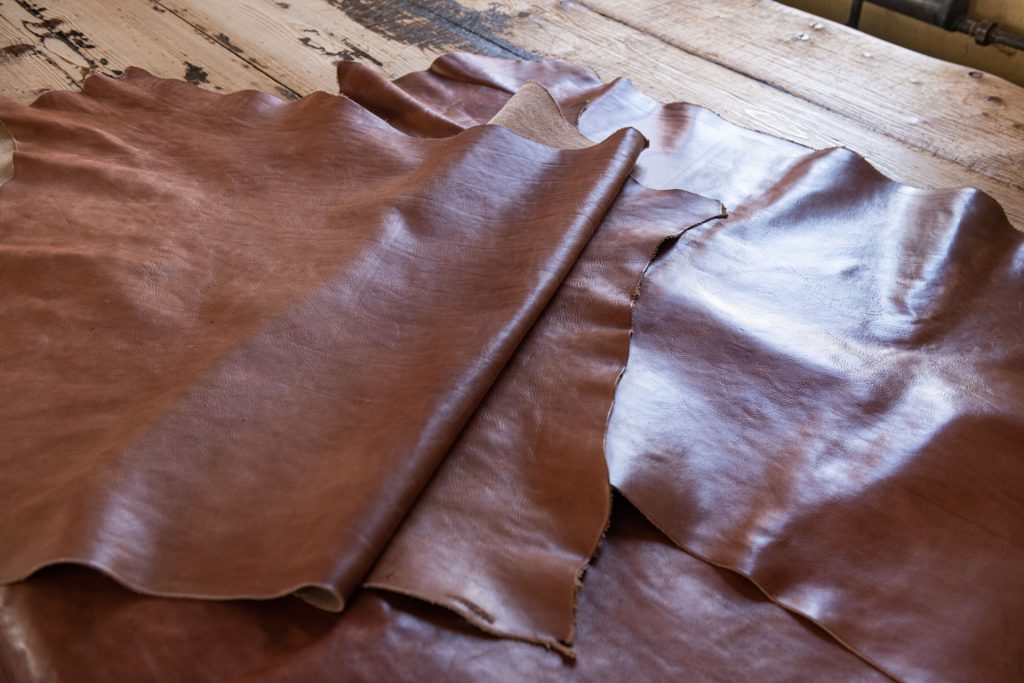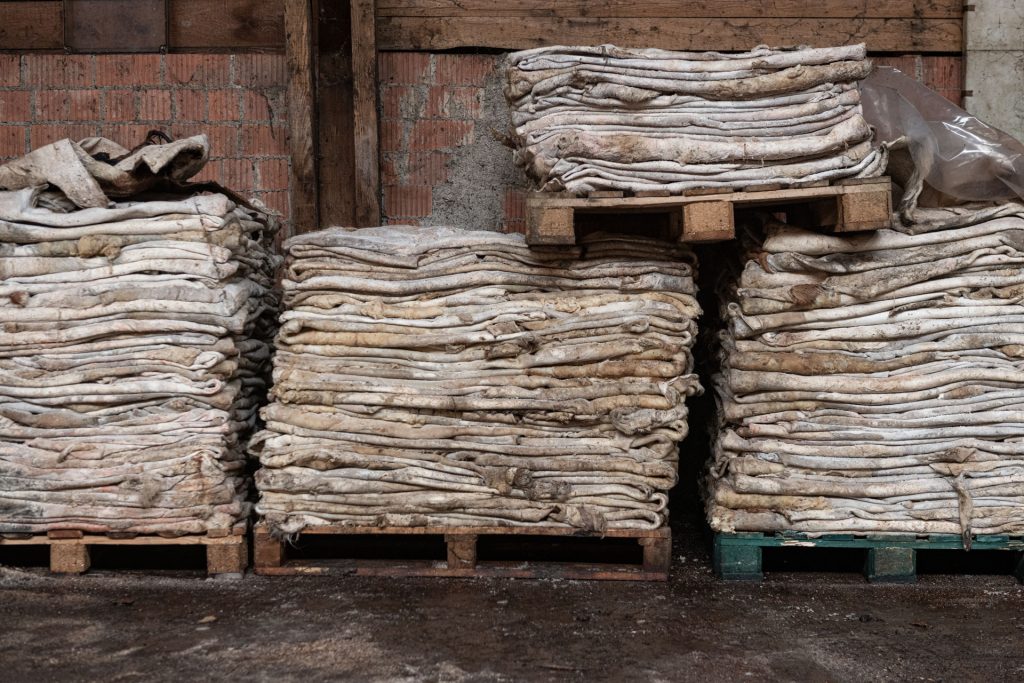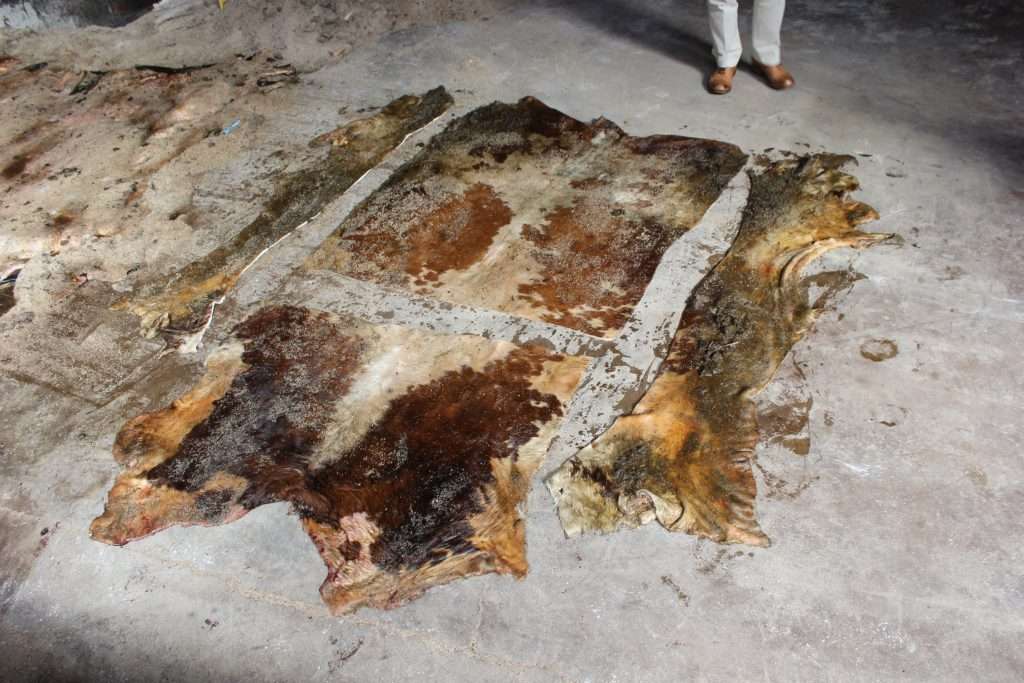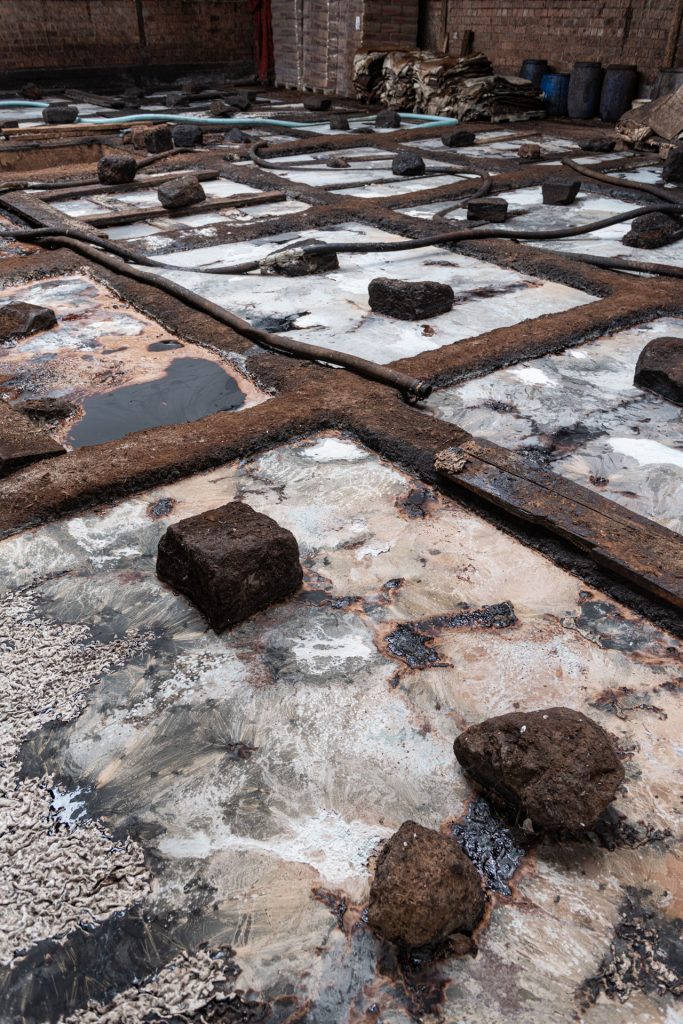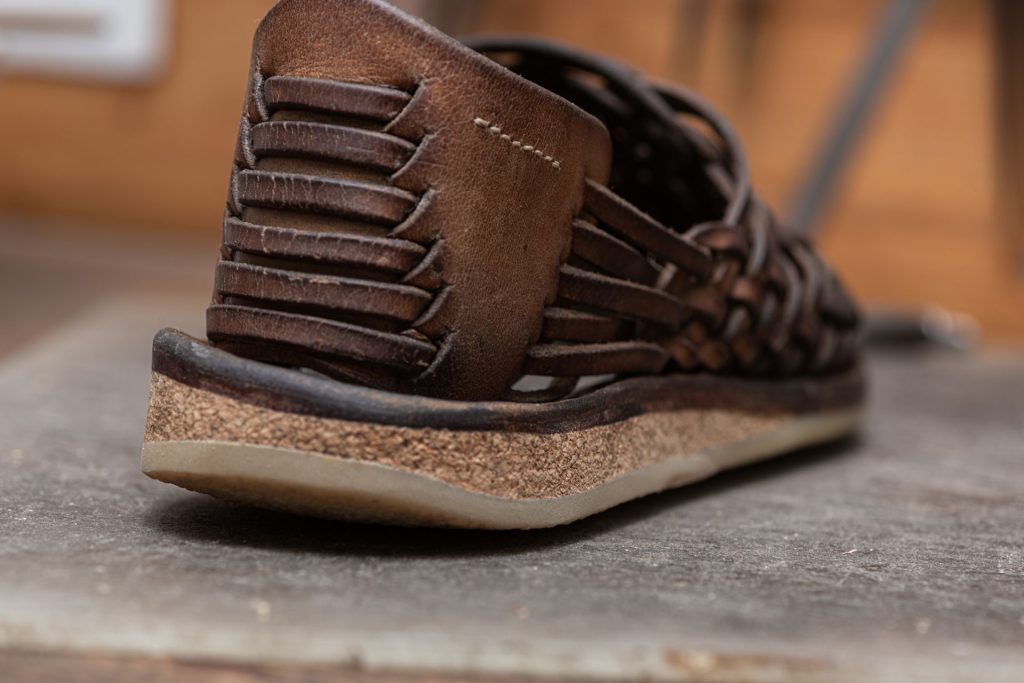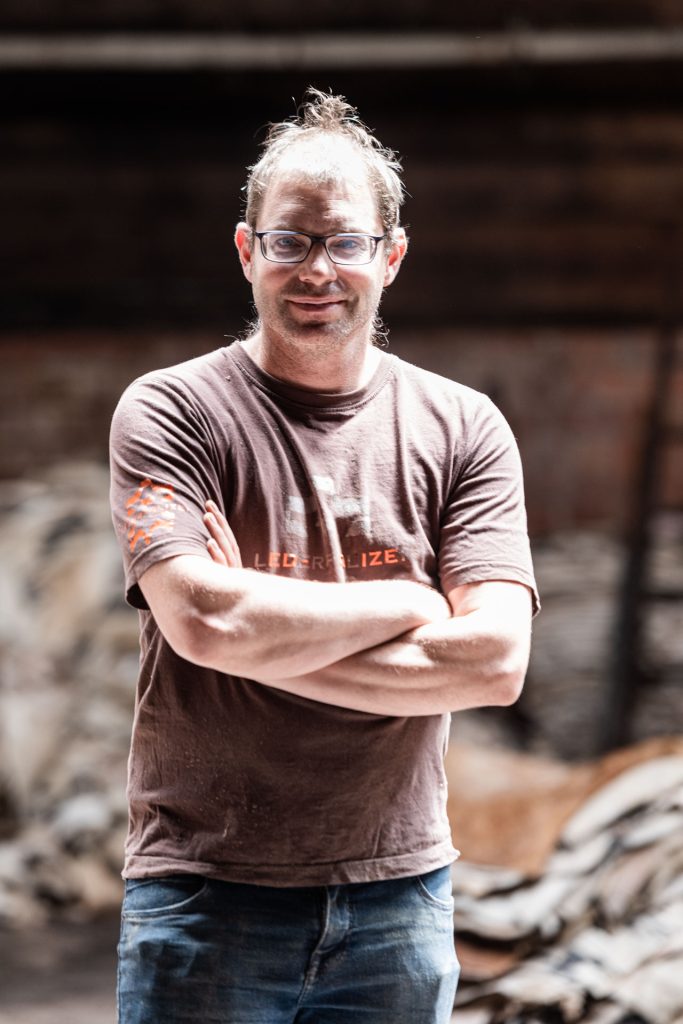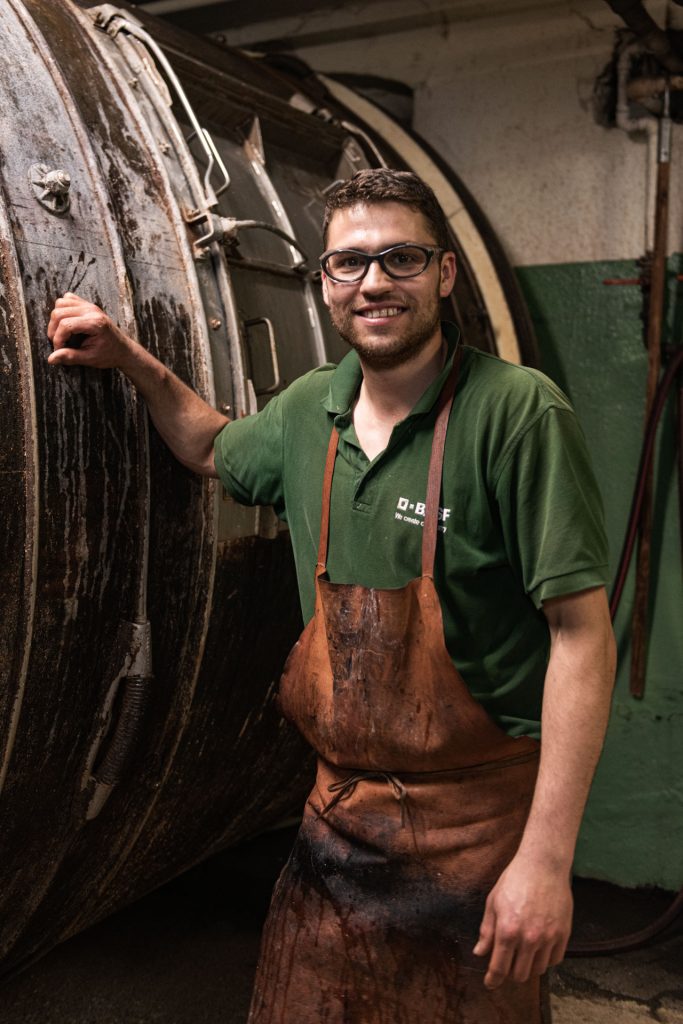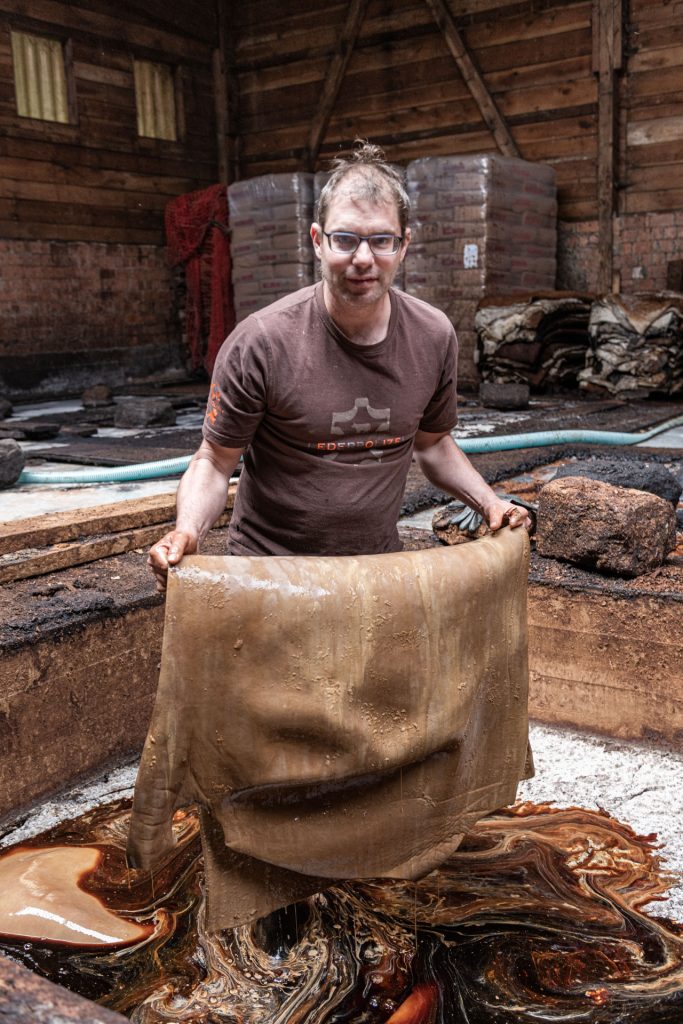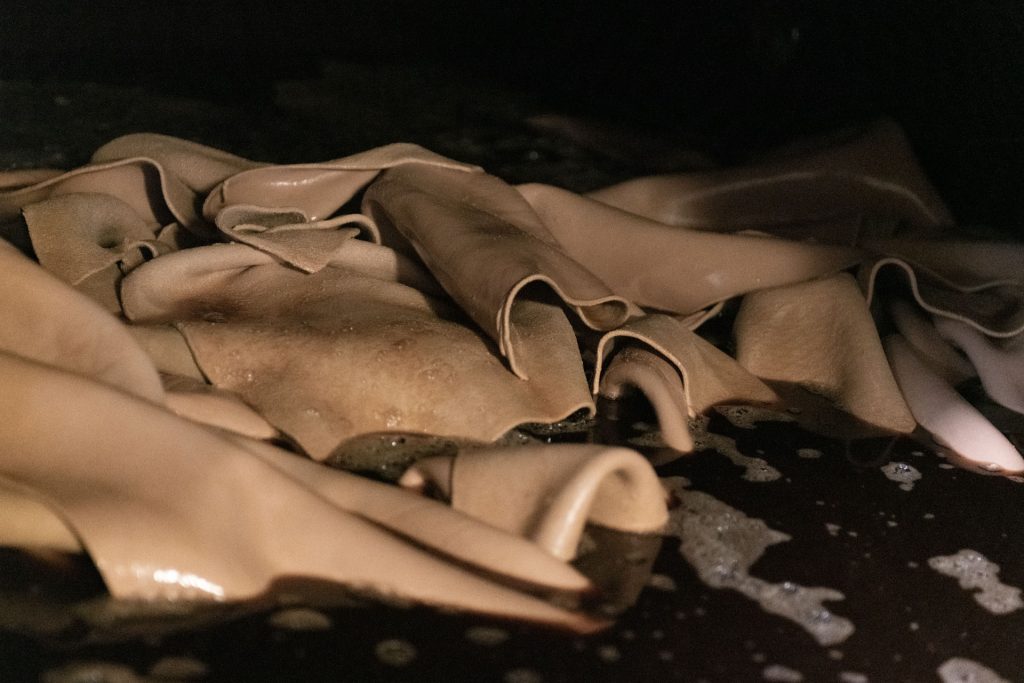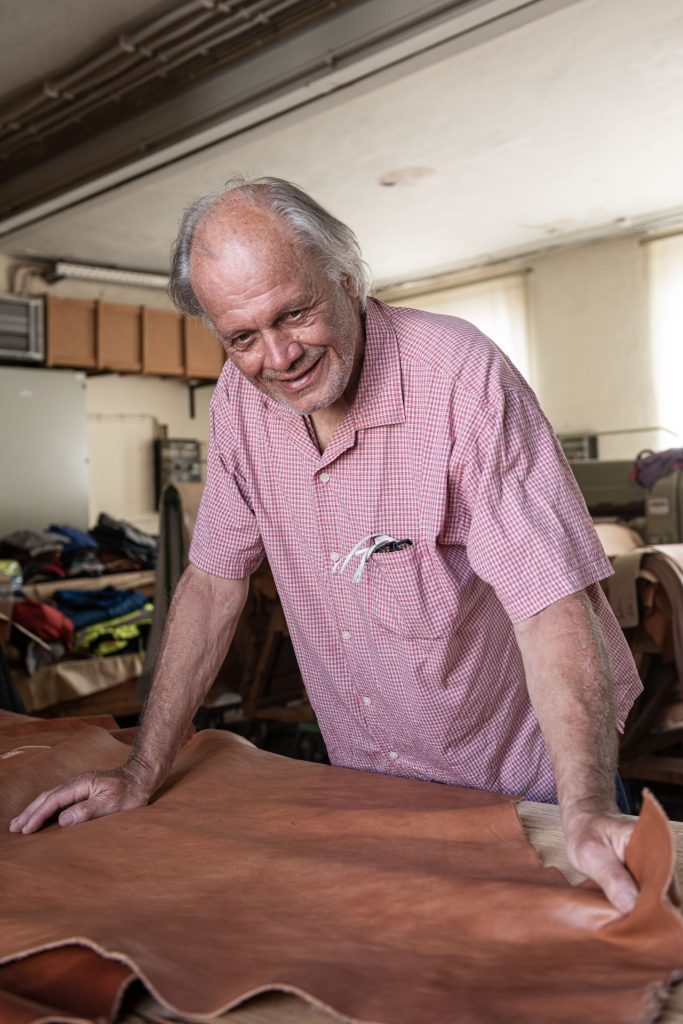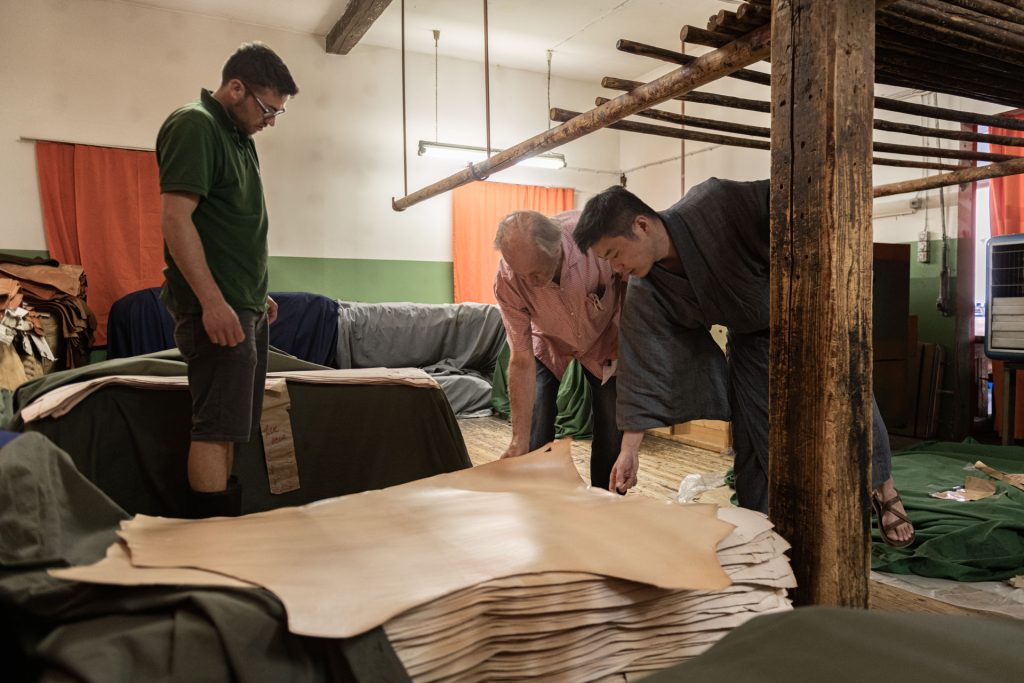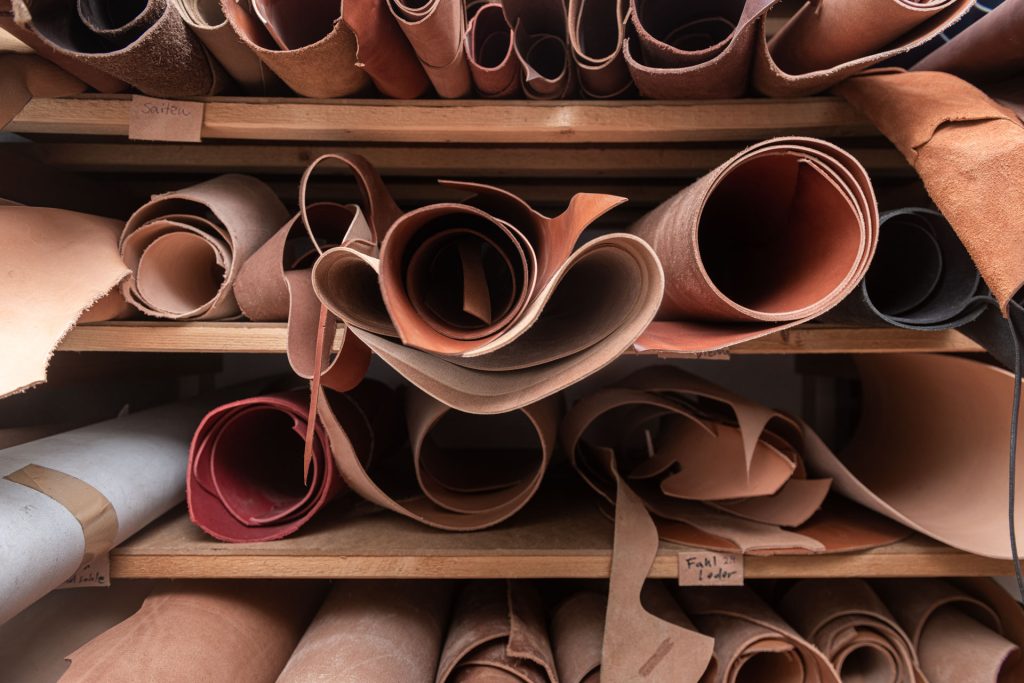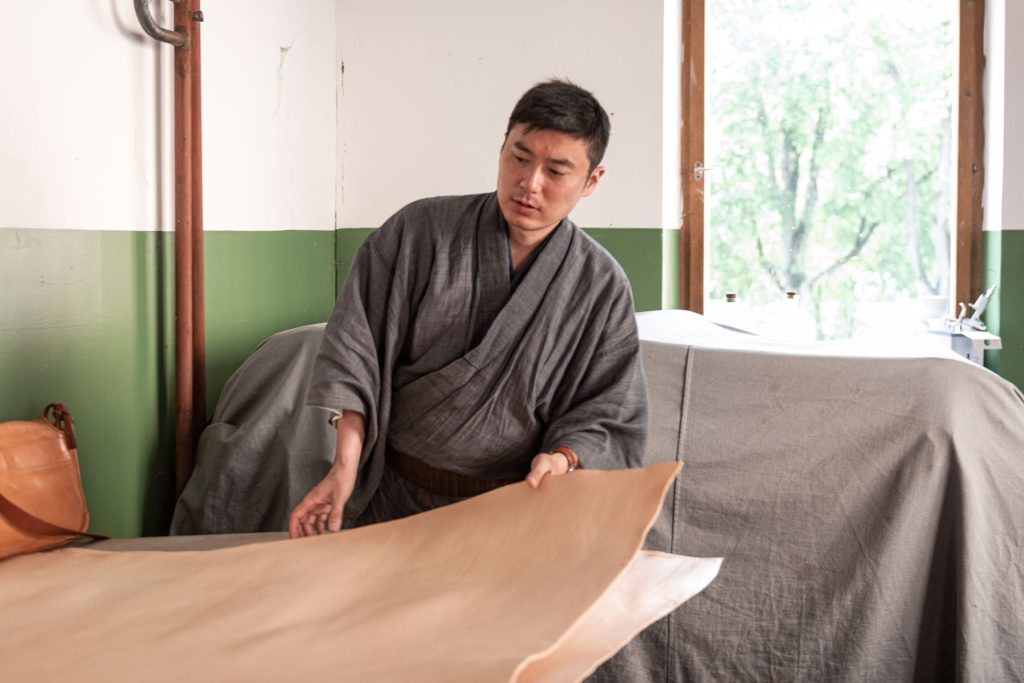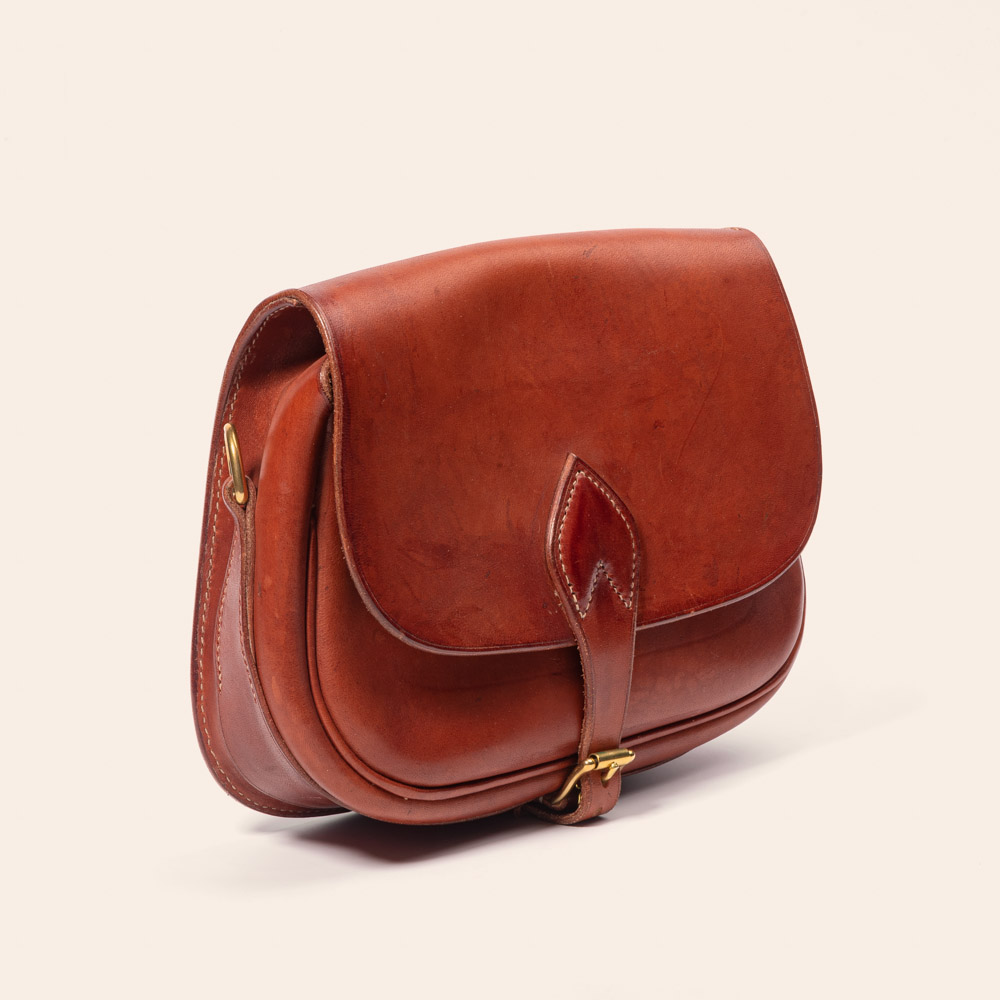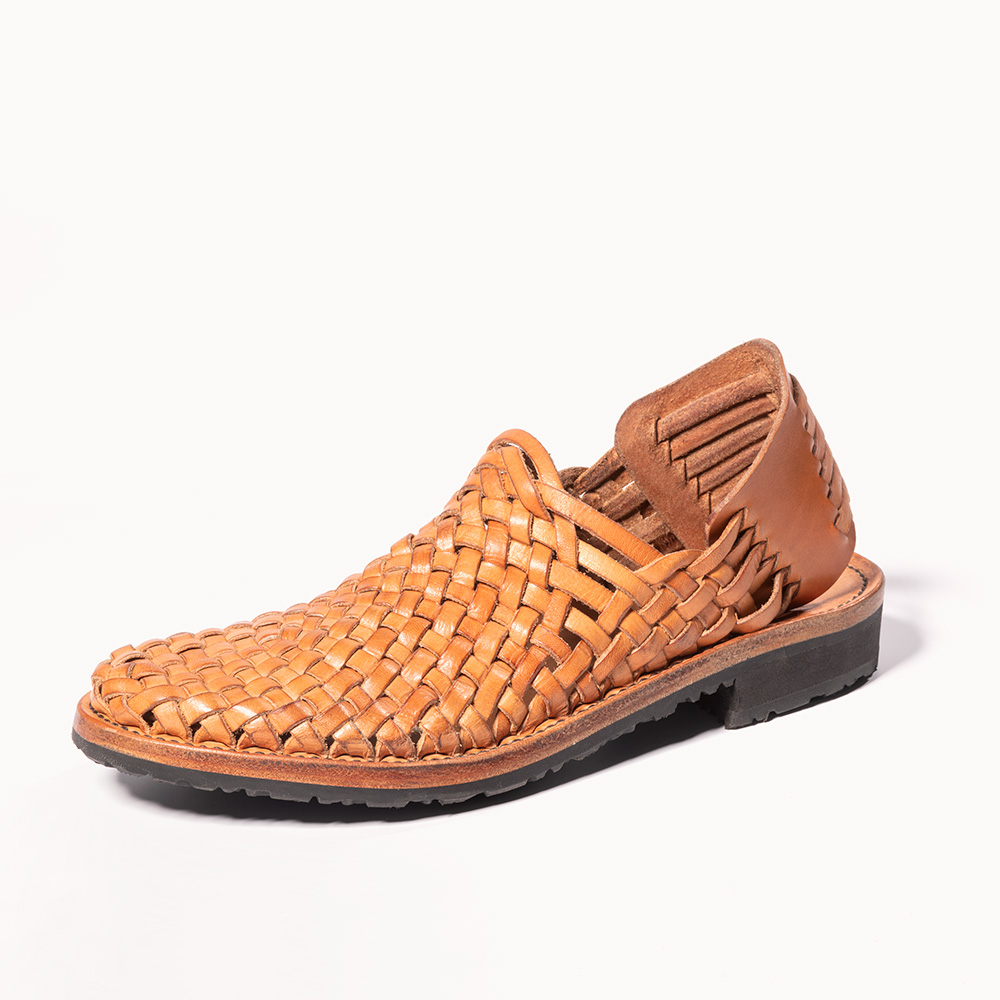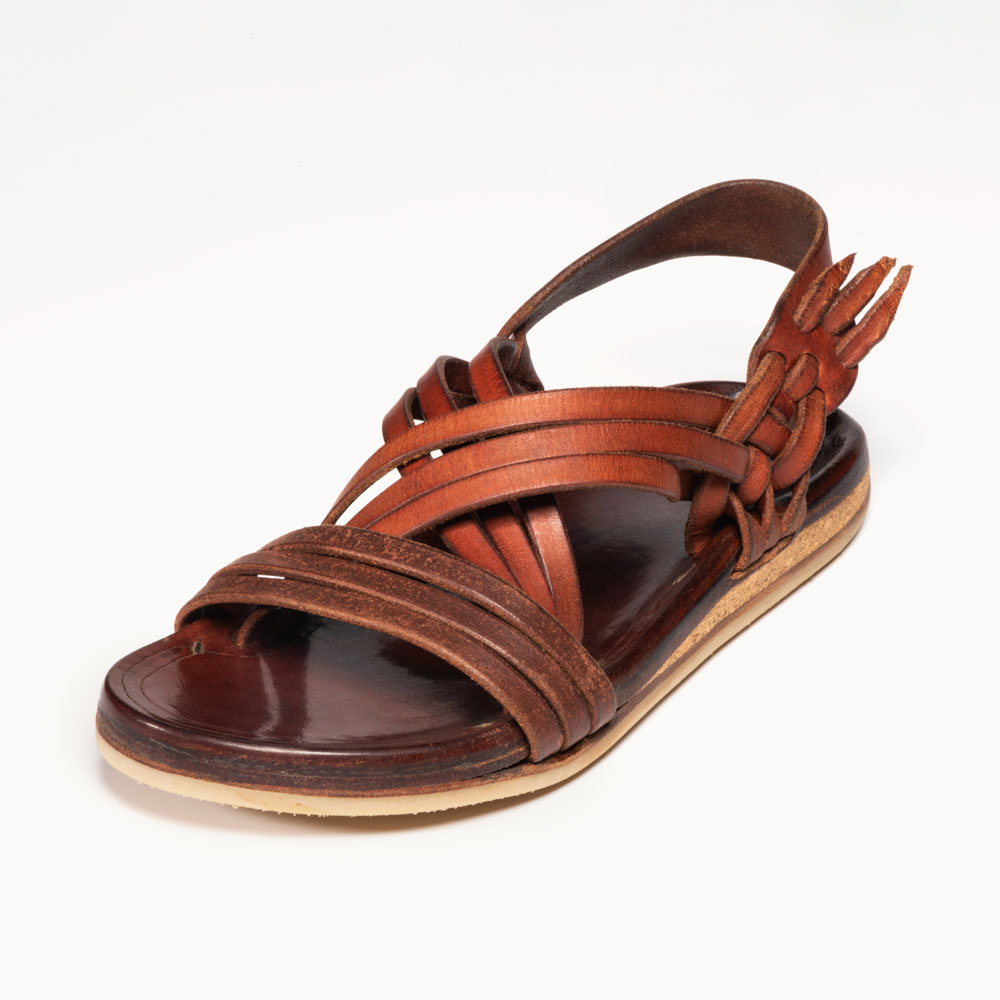Craft and material go together. Always. The most essential material in our workshop is leather. Durable, resilient leathers for our sandals, carefully selected qualities for our bags. We work closely with “our” tanneries and very carefully choose leather that best suits the job. Especially as concerns the leather qualities, there is much to consider, as the type of leather, the tanning process, the dyeing and the eventual greasing can make for very different properties, from stability to look and appearance.
Leather has practically disappeared as a technical component, but in the field of footwear, clothing, bags and accessories, leather is still in high demand. Competing materials, and in essence that means plastics of all kinds, sometimes have good functional properties that make them first choice for particular applications. For sandals, this includes wearing in wet or damp conditions. On the other hand, there is always a waste disposal problem with plastic sandals, since they are made of quite different materials. Repair is difficult or downright impossible, and the raw materials used – especially mineral oil – might raise some scepticism as well. However, those who do disapprove of animal products will find good alternatives in plastic sandals.
We buy whole skins and cut them to size, dye straps or insoles for our sandals and shoes ourselves with aniline dyes, then grease the finished parts with good leather grease and polish them with a rag or soft brush. Which basically means: the leather we get from the tanneries is still not the final product. When we start working with the leather and processing it in the sandal workshop, we once again change the properties of the leather. Only then it will fit perfectly with our sandals and shoes.
As concerns our bags, the tanneries take over more some more preliminary work. Dyeing whole suede skins or heavily greasing leather is much easier done in the tannery than in our small workshop. And, of course, we can always rely on the quality of our tanneries.
We really like the character of the vegetable tanned leather. What’s more, it is very mild on the skin, only very few people react sensitively to the natural tannins. A certain amount of the tannins remains in the leather. That’s how it is supposed to be, since, after all, these tannins are what makes the skin leather in the first place.
When the sandals are worn or the bags are used, the leather will slowly change again. Some say it is “alive”, but, fortunately, this is not true of course. The leather changes its appearance depending on how it is used and cared for, and the hue may change over time, which is quite typical for vegetable tanned leather. In short, whoever wears our sandals or carries our bags will contribute to the design, look and feel. You can tell by the unique patina. Which is, come to think about it, a nice thought.
